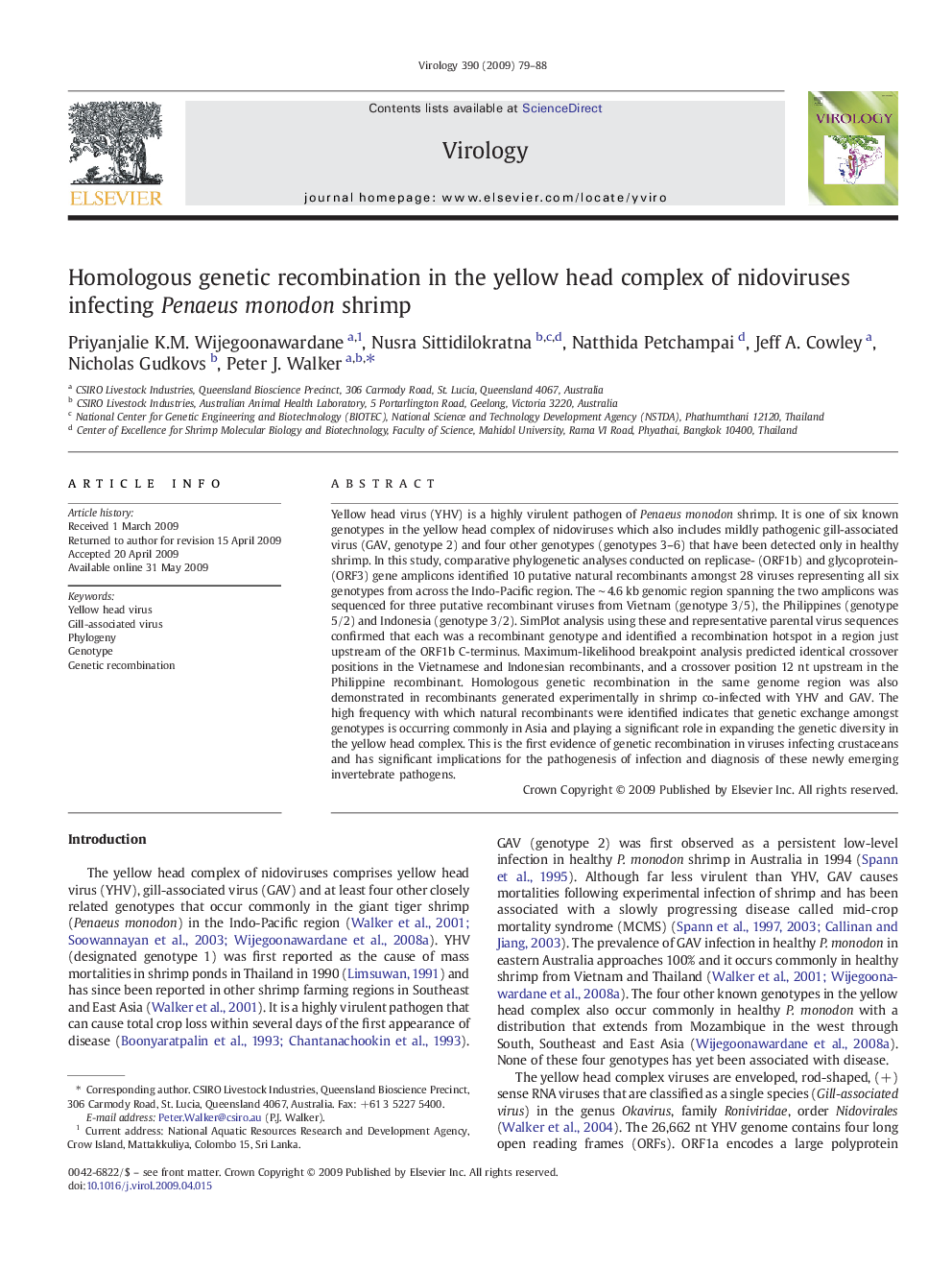| Article ID | Journal | Published Year | Pages | File Type |
|---|---|---|---|---|
| 6141876 | Virology | 2009 | 10 Pages |
Abstract
Yellow head virus (YHV) is a highly virulent pathogen of Penaeus monodon shrimp. It is one of six known genotypes in the yellow head complex of nidoviruses which also includes mildly pathogenic gill-associated virus (GAV, genotype 2) and four other genotypes (genotypes 3-6) that have been detected only in healthy shrimp. In this study, comparative phylogenetic analyses conducted on replicase- (ORF1b) and glycoprotein- (ORF3) gene amplicons identified 10 putative natural recombinants amongst 28 viruses representing all six genotypes from across the Indo-Pacific region. The â¼Â 4.6 kb genomic region spanning the two amplicons was sequenced for three putative recombinant viruses from Vietnam (genotype 3/5), the Philippines (genotype 5/2) and Indonesia (genotype 3/2). SimPlot analysis using these and representative parental virus sequences confirmed that each was a recombinant genotype and identified a recombination hotspot in a region just upstream of the ORF1b C-terminus. Maximum-likelihood breakpoint analysis predicted identical crossover positions in the Vietnamese and Indonesian recombinants, and a crossover position 12 nt upstream in the Philippine recombinant. Homologous genetic recombination in the same genome region was also demonstrated in recombinants generated experimentally in shrimp co-infected with YHV and GAV. The high frequency with which natural recombinants were identified indicates that genetic exchange amongst genotypes is occurring commonly in Asia and playing a significant role in expanding the genetic diversity in the yellow head complex. This is the first evidence of genetic recombination in viruses infecting crustaceans and has significant implications for the pathogenesis of infection and diagnosis of these newly emerging invertebrate pathogens.
Related Topics
Life Sciences
Immunology and Microbiology
Virology
Authors
Priyanjalie K.M. Wijegoonawardane, Nusra Sittidilokratna, Natthida Petchampai, Jeff A. Cowley, Nicholas Gudkovs, Peter J. Walker,
